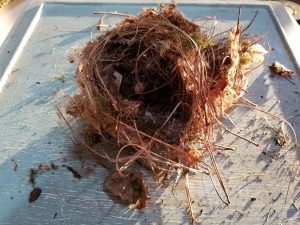
When learning color mixing, there are three (3) sets of opposite colors to remember:
Color Set #1-CHRISTMAS colors: Red & Green
Color Set #2-EASTER colors: Yellow & Purple
Color Set #3-SUNSET colors: Orange & Blue
In discussing the definition of a color, let’s work with the Color set #1, the Christmas Colors, red and green. “Red” is defined as any color that has ANY KIND of red in the paint mixture…rust, rose, pink, coral, burgundy, orange-red, red-orange, wine, grape, purple, etc. The definition of a color such as “Green”, Red’s opposite on the color wheel, is the same. So, this set of opposite colors gives us MANY forms of reds and greens to work with. Think of color set #2 and #3 in this same way and you will have hundreds of colors to paint with. However, it is very difficult to ever mix the exact same color again because if you combine white, black, and yellow you will be able to mix 739 readable colors. The lesson here is to mix enough color in the FIRST mixture that you will need to use for your painting. I always like to mix extra, more than I think I will need.
Many times in painting we need subdued colors and these are made by toning down a color with its opposite on the color wheel, i.e., tone down “any” red with “any” green using the above definition. Technically it is called neutralizing a color or being able to tone down a color to soften it or take the intensity out of it…when taken to the extreme half and half of the red mix and the green mix we create a taupe or gray which equals a “neutral”. A taupe color of the half and half mix will have more of the warm color creating it and the gray color of the half and half mix will have a bit more of the cool color in it.
It you wish to breathe live into your painting, try putting opposite colors next to each other on your paper or canvas. Always try to paint with full spectrum color and your painting will become magical!
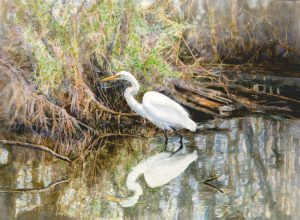 Each time an artist makes a painting they are actually doing something that do not know how to do. At the very least, a portion of the painting needs much thought, and then there other times when more challenge is there than they recognized going into working on it.
Each time an artist makes a painting they are actually doing something that do not know how to do. At the very least, a portion of the painting needs much thought, and then there other times when more challenge is there than they recognized going into working on it.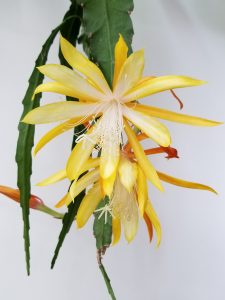 This one just bloomed today! This is a day-booming Epicactus Epiphyllum “Fruhlingsgold” native to Central America. This is an extraordinary tropical succulent cactus or flowering Jungle Cacti, common name “Orchid Cactus”. It is part of a collection of fifteen epicactus of mine and I always tend these semi ugly plants just for the very spectacular, huge, fragrant blooms. Epiphyllums bloom in the spring on 2-3 year old potted plants and off and on during the
This one just bloomed today! This is a day-booming Epicactus Epiphyllum “Fruhlingsgold” native to Central America. This is an extraordinary tropical succulent cactus or flowering Jungle Cacti, common name “Orchid Cactus”. It is part of a collection of fifteen epicactus of mine and I always tend these semi ugly plants just for the very spectacular, huge, fragrant blooms. Epiphyllums bloom in the spring on 2-3 year old potted plants and off and on during the 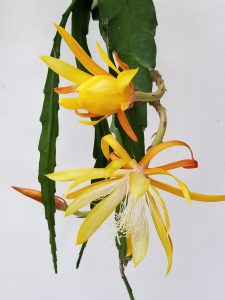 year. This one has been blooming all summer and this bloom opened November 5th. However, the major blooming season for day blooming plants starts in late April, peaks in May and ends in June. During the other months of the year we are rewarded by the occasions “off season” bloom, especially from the 4″ top 2″ varieties.The blooms range from 2″ to 8″in size and the one you see here is 6″ in diameter. Related plants are rattail cacti, rhipsalis, hoyas, Thanksiving-Christmas Cactus, Easter Cactus, and Night Blooming Cereus. They are easy to grow in hanging pots. They need night time temperatures of 45-50 degrees during the winter, where they do not receive artificial light after sundown. This is necessary for bud formation to take place. Their favorite temperatures are 45-70 degrees. In my area they are put outside in part shade and temps in the high 80’s in the summer and in the downstairs up against sliding glass doors with temp 50-70 degrees and seem to do just fine. Repot each spring.
year. This one has been blooming all summer and this bloom opened November 5th. However, the major blooming season for day blooming plants starts in late April, peaks in May and ends in June. During the other months of the year we are rewarded by the occasions “off season” bloom, especially from the 4″ top 2″ varieties.The blooms range from 2″ to 8″in size and the one you see here is 6″ in diameter. Related plants are rattail cacti, rhipsalis, hoyas, Thanksiving-Christmas Cactus, Easter Cactus, and Night Blooming Cereus. They are easy to grow in hanging pots. They need night time temperatures of 45-50 degrees during the winter, where they do not receive artificial light after sundown. This is necessary for bud formation to take place. Their favorite temperatures are 45-70 degrees. In my area they are put outside in part shade and temps in the high 80’s in the summer and in the downstairs up against sliding glass doors with temp 50-70 degrees and seem to do just fine. Repot each spring.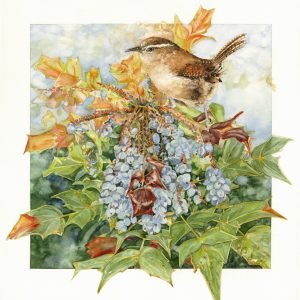
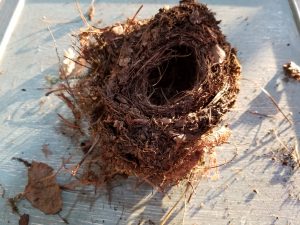
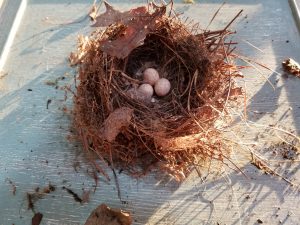 This is a wren’s nest from earlier this year that I saved. I may do a watercolor painting of it. I love the three little speckled eggs. I did wonder why she left them. This nest is really a pretty one. Each year there seems to be a game-on with the wrens to see who can get the nesting spots on the breezeway from the kitchen to the garage. It is an area where we do all the potting and repotting so there are shelves with many vases, jars, chemicals, pots, orchid supplies, hangers over a 12′ area. We usually house three to four families several times a year. I have a metal chicken on the banister of the breezeway backed up to a post and there is a nest in the backside/bottom area under the tail feathers the artist left open….now there is a wren’s nest in there.
This is a wren’s nest from earlier this year that I saved. I may do a watercolor painting of it. I love the three little speckled eggs. I did wonder why she left them. This nest is really a pretty one. Each year there seems to be a game-on with the wrens to see who can get the nesting spots on the breezeway from the kitchen to the garage. It is an area where we do all the potting and repotting so there are shelves with many vases, jars, chemicals, pots, orchid supplies, hangers over a 12′ area. We usually house three to four families several times a year. I have a metal chicken on the banister of the breezeway backed up to a post and there is a nest in the backside/bottom area under the tail feathers the artist left open….now there is a wren’s nest in there.